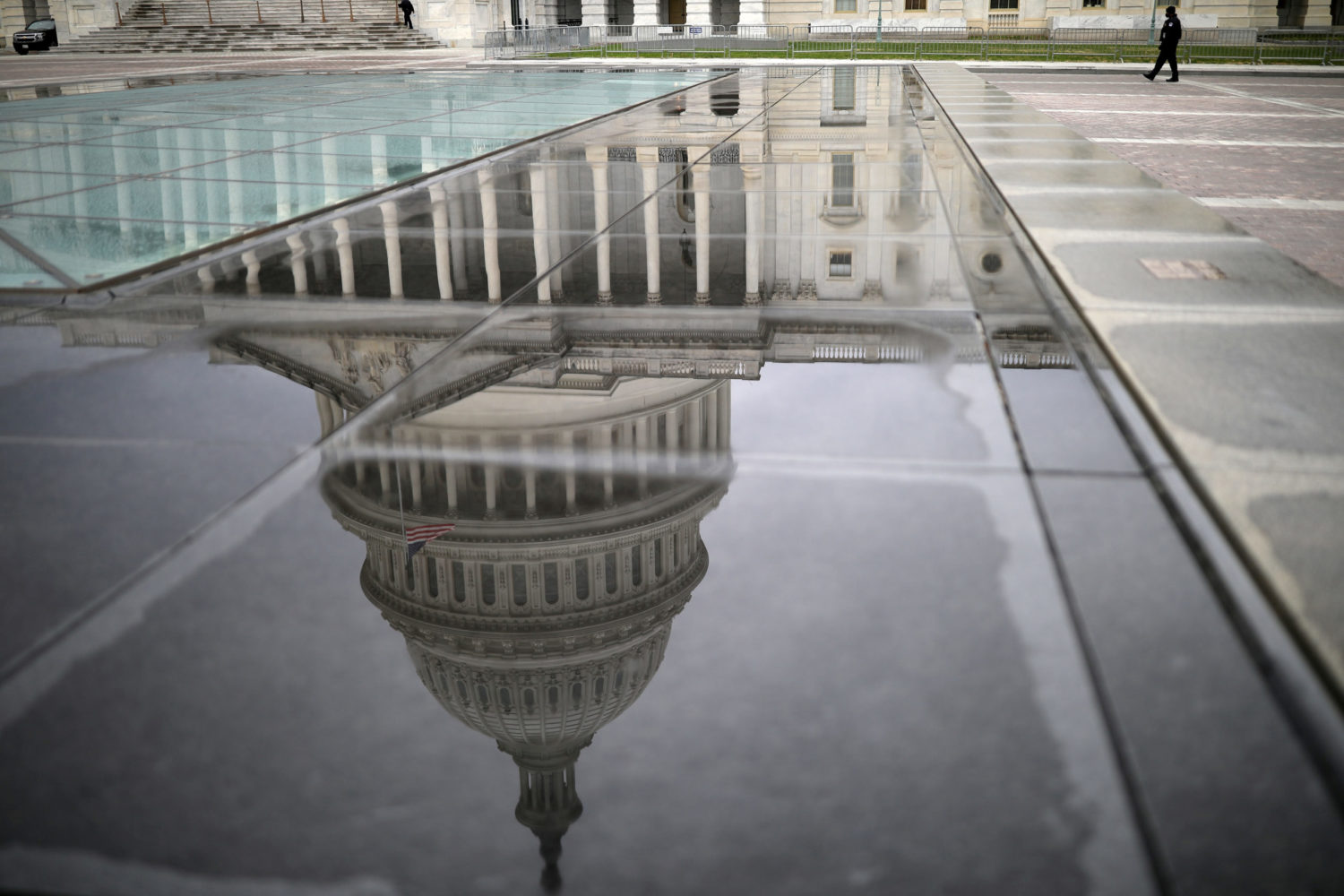
By Nandita Bose and Tom Hals
(Reuters) – The country’s first national COVID-19 vaccine mandate, expected to be unveiled by the Biden administration this week, is likely to unleash a frenzied legal battle that will hinge on a rarely used law and questions over federal power and authority over healthcare.
States, companies, trade groups, civil liberty advocates and religious organizations are expected to rush to court with demands to stop the mandate in its tracks. Two dozen Republican state attorneys general have already vowed to use “every legal option” to fight the mandate and 40 Republican lawmakers said on Wednesday they were preparing their own challenge.
Details of the vaccine and testing requirements for private employers remain under wraps. The administration has said that the rule is coming and that it requires certain businesses to “develop, implement and enforce” a mandatory policy that allows employees to either choose to get vaccinated or undergo regular testing and wear a face covering at work.
For opponents, the general principle could not be more clear: the administration’s zeal for fighting the pandemic with vaccinations and testing has trampled the law and the Constitution.
“There will be so much litigation it will never see the light of day,” said Josh Blackman, a professor at South Texas College of Law Houston.
Some legal experts, however, said protecting against a historic public health crisis provides a compelling justification for the mandate against constitutional challenges that claim it infringes on individual or state rights.
COVID-19 vaccine requirements by colleges, cities, states and companies have generally been upheld. The Supreme Court said on Friday that Maine could impose its mandate on healthcare workers, even without the usual religious exemptions.
However, the national vaccine and testing rule, which will likely run hundreds of pages, will differ in important ways from existing vaccine requirements.
It will be issued as an emergency temporary standard (ETS) by the Occupational Safety and Health Administration (OSHA), which regulates workplace dangers. Businesses with at least 100 employees must enforce the rule on their staff or face penalties.
To issue an ETS, OSHA must show there is a “grave danger” in workplaces, and it needs to justify that emergency rule as a necessary response.
A White House spokesperson did not comment for this story. White House Press Secretary Jen Psaki has said a pandemic that has killed over 740,000 Americans qualifies as a “grave risk to workers.” The Department of Labor declined to comment.
An average of 1,100 Americans are still dying daily from COVID-19, according to the latest U.S. data, the vast majority of them unvaccinated.
However, critics expect the OSHA rule to be vulnerable to legal attacks.
COVID-19 infections are trending down, some 70% of U.S. adults are fully vaccinated and treatments for the disease have improved, potentially undermining the grave danger claim.
“I think there’s an issue as to whether they can show that in every business, in every industry, every employer that has more than 100 employees, there is a grave danger from COVID,” said Scott Hecker, an employment attorney with Seyfarth Shaw, which represents businesses.
Or, as the National Retail Federation described it in a letter to Labor Secretary Marty Walsh, “workers face the danger of COVID-19 wherever they go … because they are human beings going about the world, not because they go to work.”
OSHA has convinced courts to uphold emergency standards in the past with evidence that as few as 80 lives would be saved. It will also be able to argue that masking and other COVID-19 safety measures proved no match for the extremely contagious Delta variant, necessitating the current rules.
“The fact that a person can be exposed to the COVID virus outside of the person’s place of employment does not eliminate OSHA’s authority to regulate,” Sidney Shapiro, a law professor at Wake Forest University, told a Congressional hearing last week.
Republican governors and right-wing talk show hosts have waged a political war against vaccine mandates and mask wearing, hoping to galvanize voters against Democratic President Joe Biden.
Vaccine mandates have been effective at shrinking the ranks of the unvaccinated, although they have also touched off protests, and employers worry they could worsen a national labor shortage.
Mandates on individuals have a long history and have been upheld by courts for more than a century, but they have been imposed by local and states governments, not Washington, which is restrained by the U.S. Constitution.
Critics of the mandate will argue it interferes with traditional states’ roles, namely, regulating healthcare within their boundaries.
OSHA is also fighting history. The agency has issued 10 ETS over its 50 years. Of the six that were challenged in court, only one survived entirely intact.
In the meantime, a huge number of U.S. employers will be left dealing with an uncertain outcome of the legal challenges, even as many focus on achieving compliance.
Mike Bennett, the vice president of human resources for Cianbro, a Maine construction company with 4,000 employees, said he is planning to carry out the OSHA rule.
“Unless something comes from the federal government that says ‘pause until further notice,’ we’ll continue to go down the road that this is coming,” he said.
(Reporting by Nandita Bose in Washington and Tom Hals in Wilmington, Delaware, Editing by Chris Sanders, Amy Stevens and Bill Berkrot)












